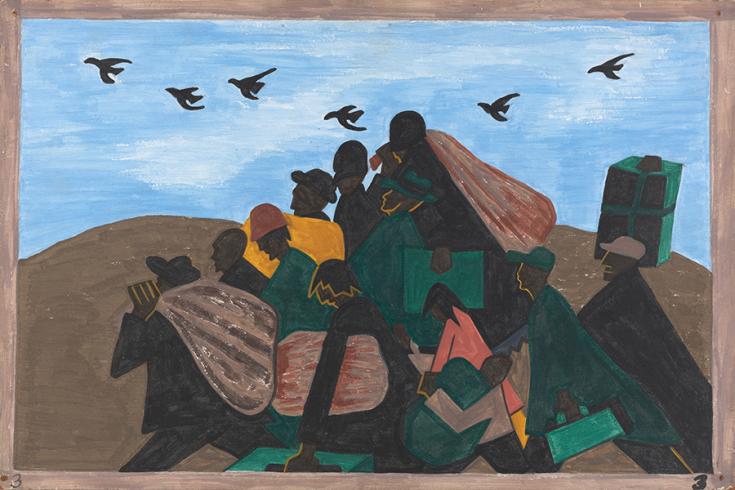Portraying Harlem

Part 1: Essay Reading & Sketching
- Read: Have students read Locke’s essay, Harlem, Mecca of the New Negro
- List: As students read the essay, prompt them to create a list of some of Locke’s key descriptions of Harlem.
- Sketch: What do they imagine Harlem looked like based on Locke’s descriptions? Try sketching what Harlem might have looked like based on Locke’s descriptions.
Part 2: Close looking
Look closely at Lawrence’s painting This is Harlem.
- What kinds of businesses and buildings make up the Harlem neighborhood?
- What kinds of activities are going on in the neighborhood?
- What is the mood of the neighborhood?
Part 3: Make Connections
Compare and contrast how Locke and Lawrence portray Harlem through their distinct mediums (writing and painting).
- What are the similarities and differences between the essay and painting?
- How do the students’ sketches of Harlem (based on Locke’s essay) compare to Lawrence’s painting?
- Considering that Lawrence may have read Locke’s essay, how do they see parts of Locke’s essay manifest in Lawrence’s painting?
- Return to Locke’s essay and find the excerpts where Locke refers to “waves” and “crests” to describe the Great Migration.
- IDENTIFY which of Lawrence’s panels portray waves of migrants moving to the north. How does Lawrence use imagery of waves of people in The Migration Series?
Additional Context
Lesson Context
In the 1920s, Harlem became a coveted address. The neighborhood in New York City was synonymous with an outpouring of production in the visual arts, music, literature, theater, and dance. This creative era came to be called the Harlem Renaissance.
Jacob Lawrence moved to Harlem when he was 13 and grew up in this vibrant community. He took art classes at the Utopia House and the Harlem Workshop while carefully observing the activity and rhythms of Harlem’s daily life.
Lawrence grew up among some of the most well-known African American thinkers during the Harlem Renaissance. He lived in the same building as the poet Claude McKay and attended the Apollo Theater where he recalled viewing performances in which “everything was jagged, bright, and brittle…so maybe my color and my shapes have this quality and developed out of that experience.”
Alain LeRoy Locke was the Harlem Renaissance’s foremost philosopher and thinker. A professor at Harvard University, Locke passionately believed African-American artists should distinguish themselves by tapping into their African heritage, folk traditions, and communities as sources of inspiration. Locke’s writings and ideas reinforced Lawrence’s enthusiasm for African-American culture and the streets of Harlem as a subject matter.
Key Terms
Great Migration: In the Southern US, African Americans endured blatant discrimination and segregation as part of Jim Crow laws, as well as poor economic conditions. In the hopes of improved living and working conditions, hundreds of thousands of African Americans migrated from the South to the North, in particular to Chicago, Los Angeles, Detroit, Philadelphia, and New York, between 1916-1940. The Great Migration happened in two major waves: the first one being from 1916-1940 and the second one from 1941-1970.
Harlem Renaissance: The largest concentration of African Americans who migrated during the Great Migration moved to Harlem. From the 1910s to mid-1030s, the neighborhood of Harlem in New York City became a hub of African American culture, with an explosion of literature, music, theater, and the arts.


